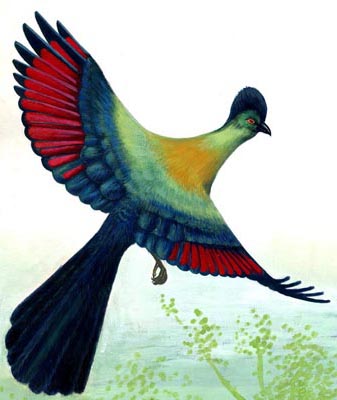The ENTC now has a new website, at www.entc.org.sz
Our logo is adapted from a painting by Phillip Dlamini, 1998, of a purple crested turaco. In traditional Swazi dress, the red feathers feature in the royal headdress, so this bird illustration is not only a symbol for wildlife conservation, but also of cultural heritage.


The Eswatini National Trust Commission(ENTC) was established by Act No. 9 of 1972, with later amendments, made effective from 27 July 1973.
The Museum was built in 1972. Two small rooms housed the exhibition area. In 1986 a storage room, workshop, photography dark room and a temporary exhibition area was constructed. This area completes the ethnography section. In 1990, Government approved and funded the construction of the showroom and natural history wing. The showroom houses three royal cars used by King Sobhuza II.
One of the first projects undertaken by the organisation was to conduct a survey of protection-worthy areas in Swaziland. One of the regions identified as a priority was the region stretching from Ngwenya Mountain in the south to Bulembu Mountain in the north. A proposal to declare the area a nature reserve was referred to the late King, His Majesty King Sobhuza II. The late King appointed Chief Bhekimpi as his eye for the project. More than eighty percent of the area was sheep grazing concession land and much of the southern area was privately owned. Findings ascertained that the area had little agricultural or stock rearing potential and King Sobhuza supported and approved the project. The families living in the area were resettled on good agricultural land adjacent to Malolotja. Over the last twenty years Malolotja has been developed into one of the country's finest reserves of which the country can be justly proud.
The Mlawula area was considered as worthy of protection for many years, and was in fact proclaimed as a protected area as far back as 1914; it was subsequently deproclaimed and subdivided into cattle ranches.
The first part of Mlawula to be reproclaimed as a conservation area was the then Blue Jay Ranch, which was donated to the Swaziland National Trust Commission by the Niven family and gazetted in 1978 as Ndzindza Nature Reserve. This move was shortly followed by the purchase of Mlawula Estates, which development was in part funded by Havelock Mines (Pty) Ltd., and the donation of Nyala Ranch by Tibiyo.
The various portions making up Mantenga were purchased by the Swaziland National Trust Commission between 1979 and 1994. In the latter year work began on infrastructure.
The Swaziland Archaeological Research Association was active from 1977 to 1989. Working in close conjunction with the SNTC they excavated the Sibebe, Nyonyane and Siphiso rock shelters. The research was exclusively centred on the stone ages, trying to establish a chronology for them by using botanists, geologists and climatologists to supplement information from the archaeological excavation.

Our Contacts:
Head Quarters: (+268) 2416 1489/1179
Email: info@sntc.org.sz
King Sobhuza II Park: (+268) 2416 1489/1179
Email: ksmp@sntc.org.sz
National Museum: (+268) 2416 1489/1179
Email: curator@sntc.org.sz
Copyright © ESWATINI NATIONAL TRUST COMMISSION
Malolotja Nature Reserve: (+268) 2444 3241 / (+268) 2416 1480
Email: culturalvillage@sntc.org.sz
Mantenga Nature Reserve and Swati Cultural Village: 2416 1151/1178
Email: culturalvillage@sntc.org.sz
Mlawula Nature Reserve: (+268) 2383 8885 (Reception)
(+268) 2383 8453 (Senior Warden)
Email: culturalvillage@sntc.org.sz
Magadzavane Lodge: (+268) 2343 5108/9
Email: magadzavane@sntc.org.sz